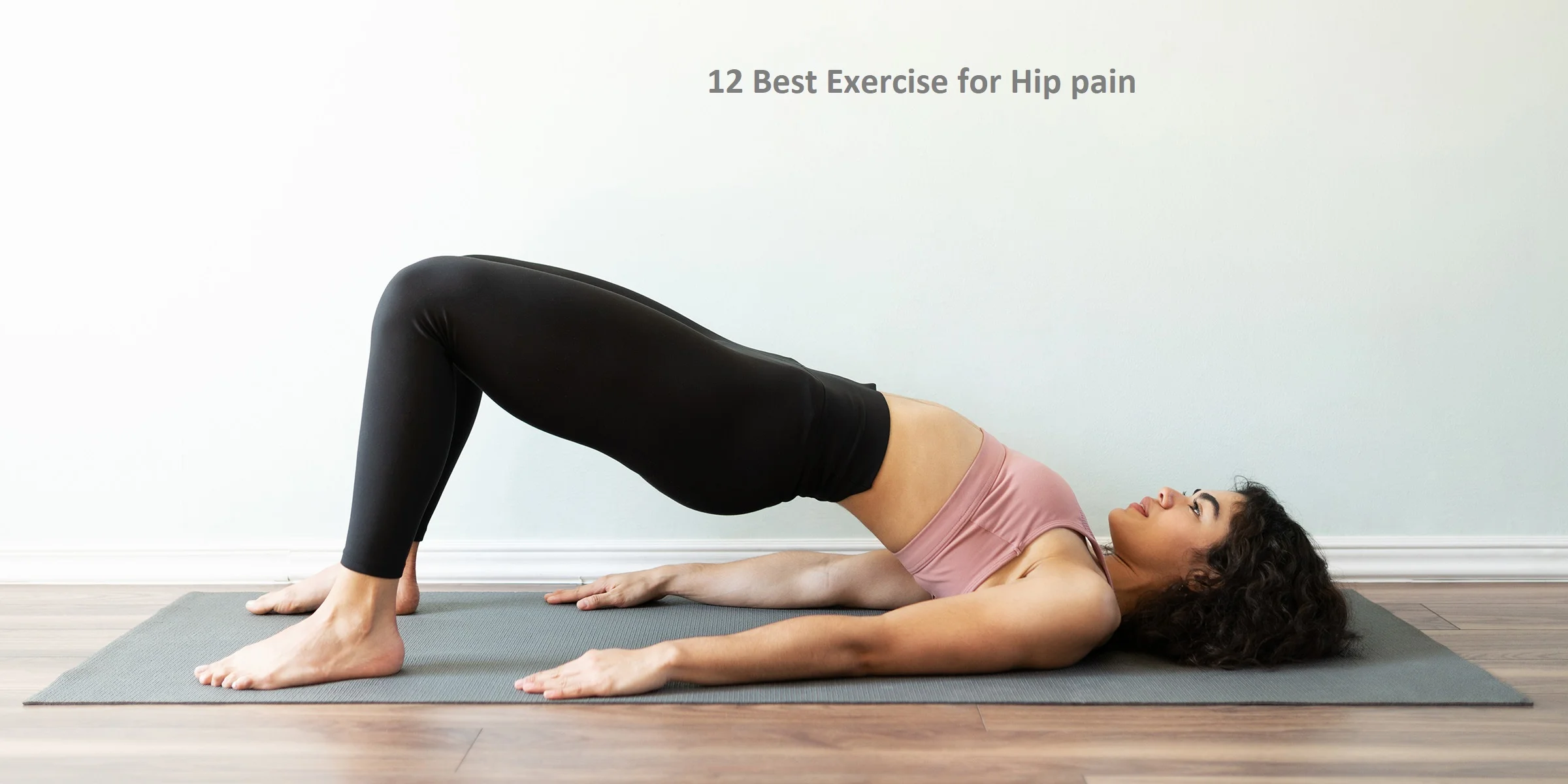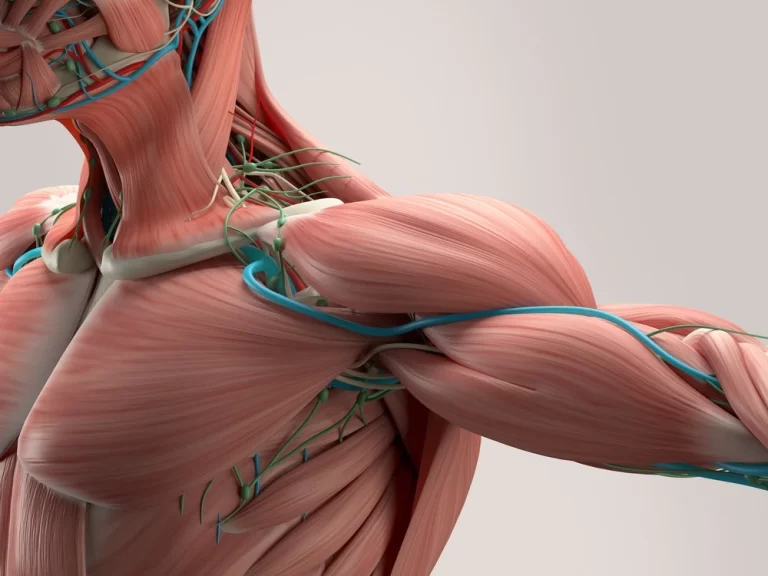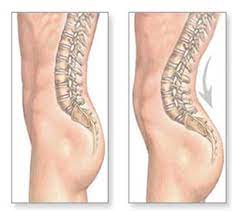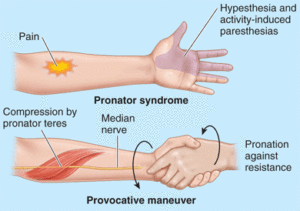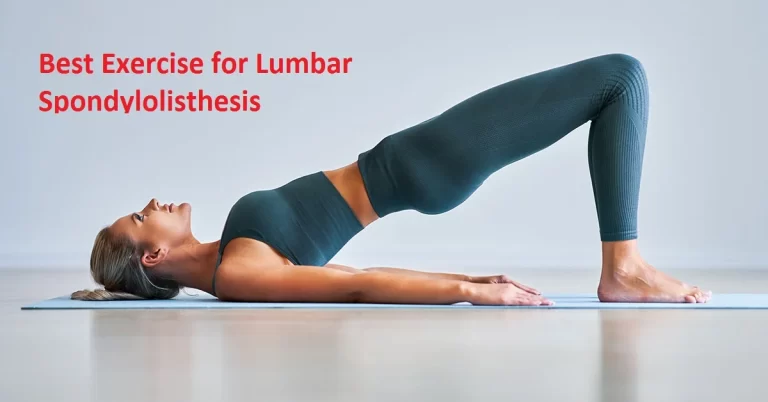12 Best Exercises for Hip Pain
Table of Contents
Introduction
Exercise for Hip pain is an essential part of your overall treatment program to relieve Hip pain and make your Hip joint more powerful, and flexible enough to perform all day-to-day activities with ease without any extra strain.
There are many possible reasons for hip pain, ranging from muscle strains and injuries to arthritis and other inflammatory disorders and hip fractures, and hip replacement.
This article describes many exercises that can help reduce pain, strengthen the hip muscle, improve hip joint mobility, increase hip muscle flexibility, and relieve hip pain.
Considerations before starting an Exercise
Improvement of flexibility and improvement of strengthing exercises are crucial to relieving or reduce of hip pain. but due to some specific activities that may cause temporary discomfort, you can feel pain. If an exercise causes pain or discomfort, suddenly stop doing particular exercises or take a rest. Those who have recently had a hip replacement or hip fracture operation should consult an orthopedic or physical therapist before performing the activities.
Common Causes of Hip Pain
Core muscle injury (a.k.a. sports hernia or athletic pubalgia) …
Bursitis. …
Tendonitis. …
Labral tears. …
Gynecological or pelvic floor issues. …
Hip impingement. …
Hip Osteoarthritis.
Symptom
You are unable to bear weight.
Your hip made a popping sound.
All hip movement is painful after a fall.
You can feel intense pain or swelling and tenderness.
You have osteoporosis
have injured your hip
12 Best Exercises for Hip Pain
Double hip rotation
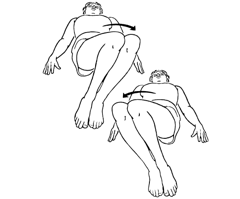
First, you should Lie flat on the back. Then, take the flexion position of the knees and bring them toward the body until the feet are flat on the mat or plinth.
Gently give rotation of the knees to the left, lowering them toward the floor of the plinth or mat. Rotate your head to face the right while keeping the shoulders against the floor.
Hold this position for 20–30 seconds.
then you should Slowly return both the head and knees to the original position.
same method you should repeat on the opposite side of the leg.
you should perform 15-20 times each session.
Hip and lower back stretch
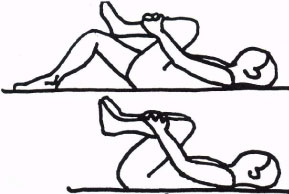
First, you should be Lying flat on the back, take the flexion position of your knees, and bring them toward the body until the feet are flat on the floor of the mat or plinth.
then placed your hand under your knee and, pull both knees in toward your chest.
take a deep breath, and then pull your one knee or both knees closer to the shoulders and then end with exhalation.
perform as you can comfortably perform, then hold the position for 15-30 seconds. take a normal breath. you should perform 10-15 times each session.
Hip extension
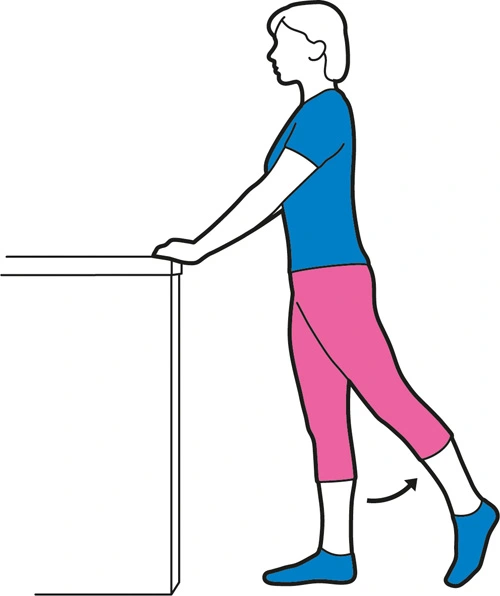
First, you should stand upright with the legs straight and the feet with normal space put together.
Extend both arms out in front and hold on to a chair(chair is for support), table, or wall for support.
you should Keep your right leg straight, and lift the left leg backward without taking the extension position of the knee.
Lift the affected leg as far as possible without feeling discomfort or pain, then should contract or tight the buttock and hold the position for 5 or 10 seconds.
Repeat hip extension 5–10 times on each leg. To increase the resistance, try attaching small weights (weight cuff)to the legs.
Mini squat
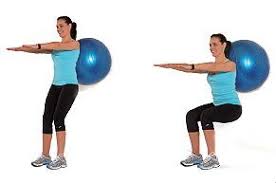
The mini squat is started mostly after hip replacement as a modification. first, you should Stand upright with the feet shoulder-width apart.
If necessary, hold on to a chair, table, or wall for support or take support of physiotherapy.
Keep your back straight, and gently lower the body by bending the knees until they are above the toes. The feet should remain flat on the mat or plinth. if it is your first time take support f the wall.
Hold this position for three to five seconds, then slowly straighten your legs to return to the starting position and take support from physiotherapy.
you should repeat these mini squats 5–10 times per session.
Bridging

First, you should Lie in the supine position, take the flexion position of the knee and place the feet flat on the mat or plinth. Keep your arms by the sides of the body with your palms facing downward. If necessary or need, place a pillow under the neck or head for stabilization of your head.
Slowly lift the pelvis and lower back upward. Be sure to keep the shoulders and upper body on the mat or plinth.
Hold the position for 5-10 seconds.
Gradually lower the back and pelvis toward the mat or plinth, starting with the top of the spine and then the whole body.
Repeat this exercise 5–10 times per session.
Knee lift

you should take a supine position extending both legs flat on the mat or plinth.
Keep your left leg leg straight and then pull the right knee up toward the chest.
after that Place both your hand on top of the knee to help pull it in toward the chest.
Hold the stretch for 10 seconds.
Let go of the knee and gently lower the leg back toward the mat or plinth.
Repeat this knee left 5–10 times on each knee.
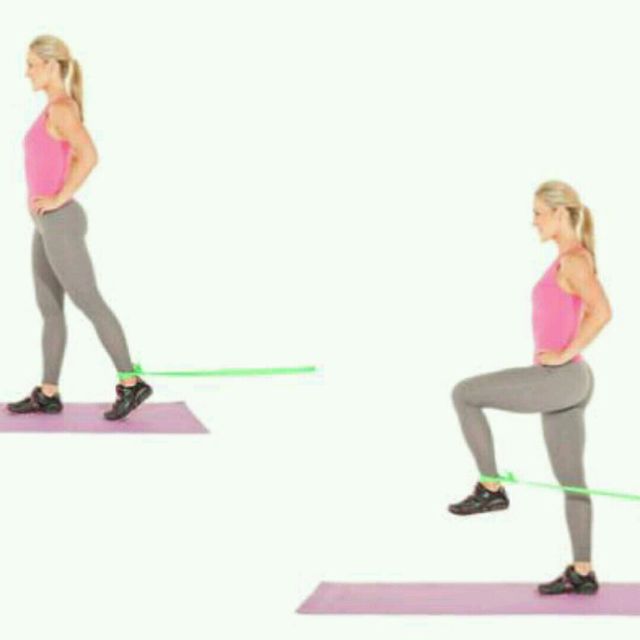
Hip flexion
First, you should Stand upright position.
Then you should Extend one arm and place it on the waist and hold onto the surface, such as a wall, table, or chair, for support.
Slowly raise the affected knee to the level of the hip or as far as is comfortable until keep your unaffected leg straight.
Only hold this position for 2-4 seconds before placing the left foot back on the ground.
you can Perform the same procedure for both legs.
perform 10-15 repetitions of this exercise for both legs.
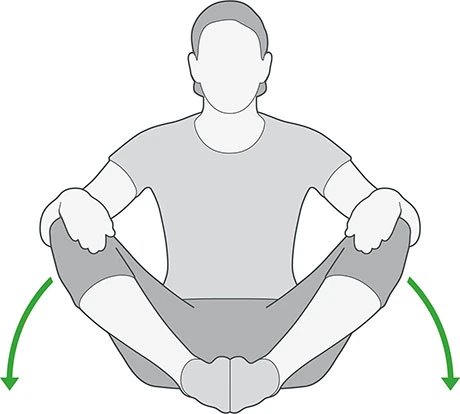
External hip rotation
First, you should Sit on the mat or plinth with hip flexion and knee flexion.
tale flexion position of the legs at the knees and press the soles of the feet together.
Place a hand on top of each knee and gently push them both down toward the ground. Apply pressure on the knees until there is you can feel stretched, but do not push them until you can feel comfortable.
give the stretch for 10 seconds and then relax.
Repeat the stretch 10-15 times.

Short-arc quadriceps exercise
First, you should Lie in a supine position flat on the back with a pillow or rolled-up towel under the affected knee.
Another hip flexed and the knee also flexed.
Then you should press the towel by your straight leg. or give the contraction to the knee.
Hold the position for 5 seconds and then gently back to the starting position.
performed 20-25 lifts on one leg and then shuffle to the opposite leg.
Quadriceps exercise
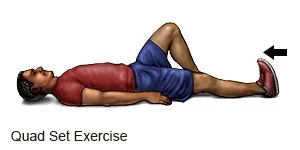
First, you should Lie in a supine position on the mat or plinth and keep the bottom hip extension position throughout the exercise.
Push the backs of both knees toward the plinth or mat and flex both feet by pulling the toes toward the body.
Hold this position for 5 or 10 seconds, then back to the normal position.
perform this Quadriceps exercise with 10-15 repetitions.
Banded walk
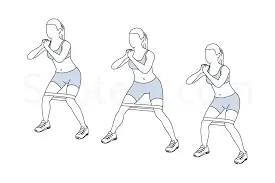
For banded walking, you want the theraband which is available in many colors according to your hip muscle strength. you should perform a banded walk after recovery from hip pain.
Grab a theraband and Place it around both your ankle or just above your knee, take knee flexion position (slight knee flexion), and walk side to side you can make a line and then walk.
Make sure to keep your both feet straight ahead while side locomotion.
After 15 to 25 steps in one direction, stop and go another way.
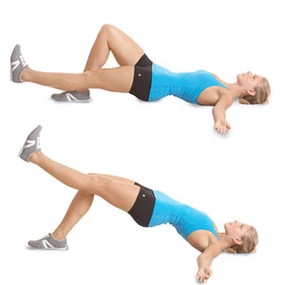
Single-leg glute bridge
This is a more advanced exercise. you should take a supine position n the plinth or mat. take both knee flexion positions. and then put one leg straight and lift your whole back. and make the bridge. hold this position for 5 or 10 seconds if you are comfortable. this exercise increases your gluteus muscle strength.
Single leg glute bridge increases the strength of your core muscle.
you should perform 10-15 times. and 3 times a day.
Why do you need to exercise to reduce hip pain?
Hip pain problem can affect the position of your pelvis which can, in turn, creates problems like back pain or knee pain. Many of these problems are caused by our sedentary lifestyle. Hip pain does not mostly affect sedentary individuals – runners can also experience it too. If not corrected, hip pain can affect basic movement and even your great performance in sports.
Precautions during exercise
Before the start of exercise for hip pain, you should take guidance from your doctor or a physical therapist and perform safe and correct exercises while considering your condition.
- Stop doing exercise if you feel any discomfort during the exercise.
- Avoid stepping (stair climbing) if you feel uncomfortable in your groin.
- Avoid jerky hip movement during exercise.
- You should Perform all exercises in a proper procedure, give proper stretches at the start of the exercise, give proper hold between the exercise, and give a proper repetition of each exercise.
- Wear comfortable clothes while exercising which provide free movement to your body and avoid tight clothes during exercise.
- Give the stretch to the tight muscle if you can feel uncomfortable it’s okay but you should never feel stabbing pain or sharp pain during the stretch.
- You should never hold your breath during exercise. during exercise, you should take a deep breath and slowly exhale through the mouth. when you hold your breath during exercise it increases the tension in your muscle so there are chances of high blood pressure.
- If you have done a total hip replacement you should avoid internal rotation of the hip joint. and for a few days after the operation you should put a pillow between the legs.
- You can add strengthening exercises when you take a normal range of the hip joint.
These Exercises are Avoid if you have Hip Pain
Trekking and Hiking while hip pain give more pressure on the hip muscles.
- Avoid Hip Flexion Workouts.
- Avoid Deep Squats and Lunges.
- Avoid Standing Exercises.
- Avoid Weight Bearing Workouts.
What not to do if you have hip problems
- Avoid bending activity of the hip and avoid give direct pressure on the hip.
- Avoiding sleep on the affected side cause aggravates the pain. avoid prolonged sitting.
- Walking on uneven ground and hiking.
- Avoid running and jumping while hip pain.
- you should avoid Warrior Pose which is defined as the You should balance on your weight through one leg, making your hip pain worse.
FAQ
Walking is one of the great ways to relieve hip pain. But, if you face daily while walking you should avoid walking, there are many other options available to you as well. If you had a hip injury, you can go for physical therapy can help you immensely through heat therapy and exercise.
Osteoarthritis is one of the most common reasons for hip pain, particularly in adults. Arthritis occurs as a result of inflammation of the hip joint and reduction of the cartilage that provides cushions to your hip bones. cause of the pain reduces the range of movement, arthritis can decrease the range of motion and cause your hips to become stiff.
Avoid exercises including repetitive all hip flexion during hip replacement you should avoid hip adduction you can put a pillow between both legs, If doing squats, keep them supported, you can perform lungs but with consideration of physiotherapy. Do not perform activity during pain. When you perform walking or running, take care of the pain.
Your hip pain may reduce when you take rest for 4-5 days, but as soon as possible you should start a physiotherapist, they provide some gentle or mild exercise to maintain your hip muscles working and maintain the range of movement and prevent your hip become stiff.
Exercise. It Is important you should perform regular exercise, which decreases hip pain and maintain the flexibility of muscle
take Pain Medicine. …
Get Some Rest. …
Apply Ice. …
Use Compression. …
Elevate the Injury. …
Apply Heat. …
Do Stretches.

